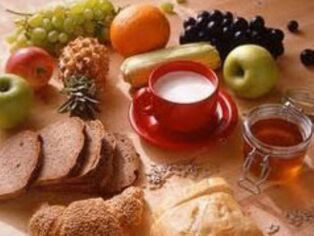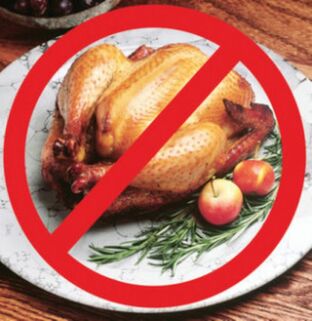Pancreatitis is a long-term and complex pancreatic disease with a multifactorial cause. One of them: a sharp violation of the norms of consumption of fatty foods, overeating, alcoholism. Adherence to special dietary rules for pancreatitis is half of the success of treatment.
The diet for pancreatitis is designed to replace and supplement the menu with substances that are poorly processed due to a deficiency in pancreatic enzymes.
Some patients think that nutritional therapy for pancreatitis is no different from diet 5a and continue to follow its recommendations. This is understandable because most people initially receive long-term treatment for cholecystitis, gallstone disease, or hepatitis. They are very familiar with tables 5a and 5, which establish the nutritional standards required for this disease.
But if pancreatitis is detected, the 5a diet should be changed. The changes that occur when the pancreas is damaged requires correction of the protein, fat, and carbohydrate content. The diet for pancreatitis patients is called "5p". It has increased the protein content to 150 g (at No. 5 100-120 g), reduced the amount of fat (at No. 5 at least 70 g) and carbohydrates (at No. 5 at least 300 g). Cooking rules and limiting food choices remain common.
Basic requirements for food nutrition
The proposed diet rule # 5p does not exclude the use of concomitant diseases of the digestive system. They are essential for maximum expansion of the pancreas.

- Cooks only foods that are boiled, stewed, grilled or steamed. The frying method is strictly prohibited.
- Observe the removal of damaged organs by grinding all plates during the most acute stage of the disease.
- Medium temperature is required (no sharp fluctuation from cold to hot).
- The patient needs to be fed with a small amount of food, but after 3-4 hours.
- Avoid eating one big meal, overeating even diet foods.
- Maintain a daily calorie intake of at least 3000 kcal.
The recommended diet table according to Povzner considers options for periods of exacerbation and beyond, when pain has gone away, but maintaining and continuing proper nutrition in pancreatitis is essential.
5p diet options for exacerbation of pancreatitis
The clinical manifestations of acute and chronic pancreatitis in the exacerbation stage (sharp pain, vomiting, nausea, diarrhea) do not allow the patient to eat in the usual way. The treatment regimen requires two to four days of total fasting. You can't drink either; in the first days, fluid is injected intravenously.
After stopping vomiting and pain, the initial 5p diet was prescribed. Its purpose is to reduce the build-up of stomach acid and allow the pancreas to concentrate all its strength on the struggle for survival.
The diet allows for a period of use of not more than two weeks, due to its unbalanced composition (reduced protein to 60 g, fat up to 50 g, carbohydrates up to 200-280 g, for a total calorie content of 1800 kcal). Of course, bed rest and physical inactivity are highly recommended.
The diet table menu of patients with pancreatitis consists of mashed mucosal cereal soup, liquid cereal in water (semolina and rice not included), mashed potatoes or carrots with added zucchini, boiled pumpkin (cabbage in all forms excluded), jelly, jelly, pudding, some white biscuits. Everything is served and cooked without oil. You can drink up to 2 liters of water, rosehip broth, thin, slightly sweet tea. After this option, on the doctor's recommendation, they switch to the second type of food.
Diet without exacerbation of pancreatitis
The start of an effective recovery process was assessed by normalization of temperature, decreased frequency of diarrhea, and absence of pain. Diet for pancreatitis develops, but the maximum norms of protein, fat and carbohydrates are observed. It is important to include a set of vitamins in the current therapeutic diet to activate the body's defenses. The patient must adhere to this diet throughout his life.
Diet for pancreatitis strictly prohibits:

- fatty meat, fish and rich vegetarian soups (with cabbage or mushrooms);
- fatty meat from beef and pork, duck;
- lard and cooking oil;
- smoked meat, hot snacks, sauces, canned goods of any kind, sausages;
- rich pastries, culinary creams, chocolate, pies, dark bread;
- from vegetables, the diet for pancreatitis does not recommend horseradish, cabbage, radish, sorrel, spinach;
- carbonated drinks, beer, alcohol, coffee.
Recommended products and foods:
- dry white bread or dry biscuits;
- steamed, oven-baked, lean meat and poultry dishes, meatballs, meatballs and meat casseroles;
- soup from cereals, with noodles, you can season with sour cream;
- non-sour cottage cheese, hard cheese varieties;
- butter or vegetable oil should be added directly to the plate, not more than one tablespoon per day;
- semi-liquid porridge, boiled in water or diluted milk;
- unsweetened baked apples, jelly, or fruit compote;
- lightly brewed tea with milk or rose hips in broth, slightly sweetened.
The diet for pancreatitis in remission recommends the following sample menu for people working for the day:
- Breakfast before work - you can make a steam protein omelet from two eggs or half a serving of oatmeal in milk, tea with milk.
- Breakfast # 2 (at lunch) - take boiled meat with mashed potatoes or vegetables, half a packet of cottage cheese, if at work there is an opportunity to heat it in the microwave, be sure to use it.
- Slightly sweet tea.
- Lunch (at home after work) - half plate vegetarian potato soup, steamed meatballs with vegetable puree, apple jelly on top of xylitol.
- Dinner - a piece of boiled chicken, cottage cheese casserole, tea with milk.
- At night (no more than 21 hours) fruit jelly in xylitol.
It is possible to take vegetables and fruits that are not applied, as well as to increase the diet only with the approval of a doctor, after examination, to ensure that the enzymatic activity of the pancreas is restored and that there is no inflammation.































































